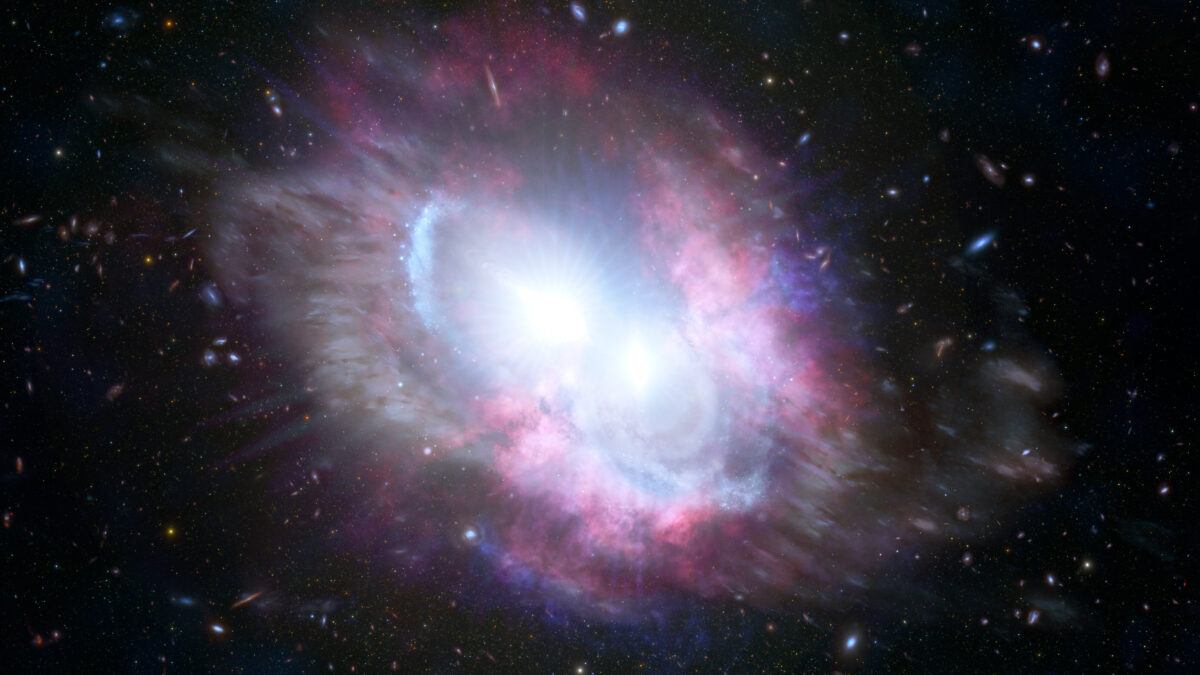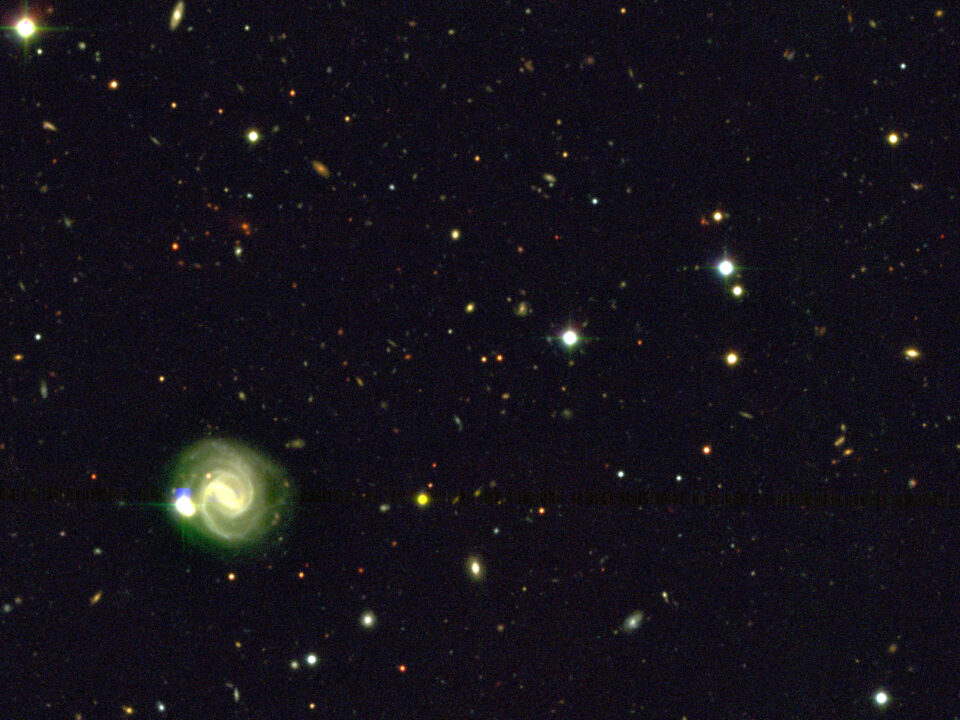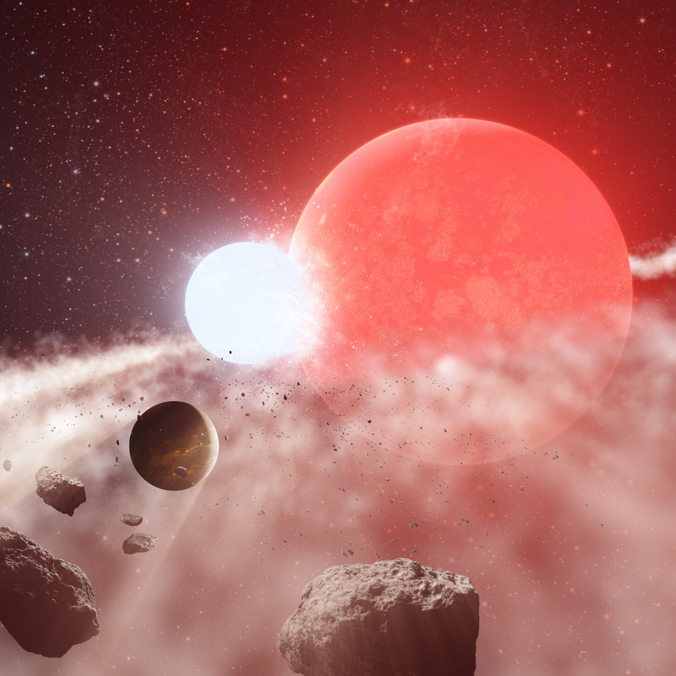Colliding Quasars Set to Trigger Energetic Star Formation

Surprise Kilonova Explosion Upends our Understanding of Gamma-ray Bursts
January 4, 2023
Gemini North Back On Sky With Dazzling Image of Supernova in the Pinwheel Galaxy
June 13, 2023This artist's impression illustrates that astronomers using an array of ground- and space-based telescopes, including Gemini North on Hawai‘i, have uncovered a closely bound duo of energetic quasars — the hallmark of a pair of merging galaxies — seen when the Universe was only three billion years old. This discovery sheds light on the evolution of galaxies at “cosmic noon,” a period in the history of the Universe when galaxies underwent bursts of furious star formation. This merger also represents a system on the verge of becoming a giant elliptical galaxy. Credit: International Gemini Observatory/NOIRLab/NSF/AURA/M. Zamani, J. da Silva
Astronomers using the Gemini North and Keck telescopes, on Maunakea, have discovered two Quasars that are on the verge of merging to produce a giant elliptical galaxy.
These quasars are thought to have formed when the Universe was a mere 3 billion years old.
Seeing two such quasars in the process of merging is rare, let alone catching them in the act so soon after the birth of the Universe. This remarkable discovery by Gemini North (a Program of NSF’s NOIRLab) was confirmed by follow up observations using the W.M Keck Observatory, NSF’s Very Large Array, and NASA’s Chandra X-Ray observatory. For more details see the NOIRLab press release.




